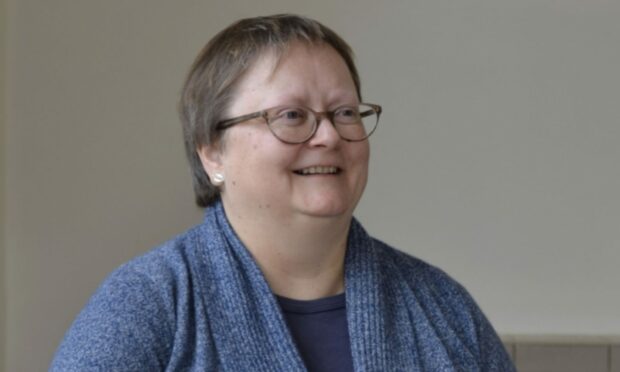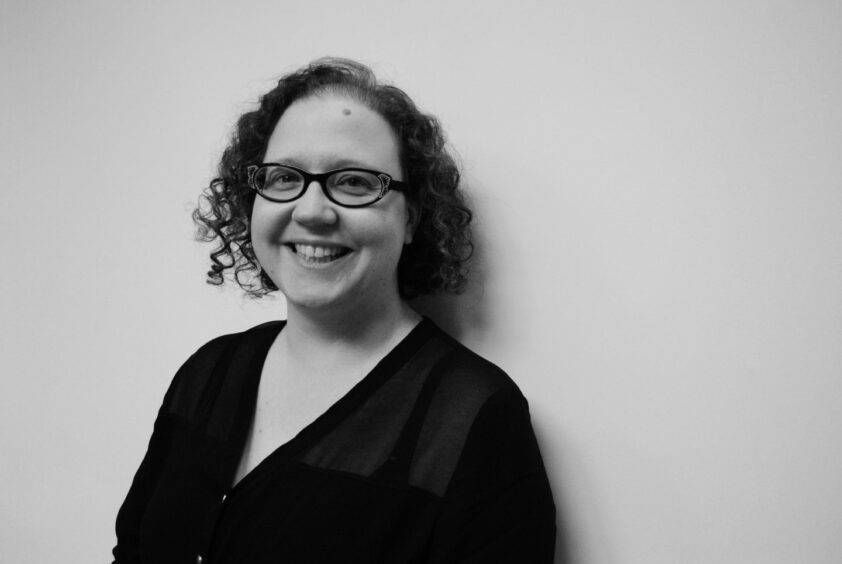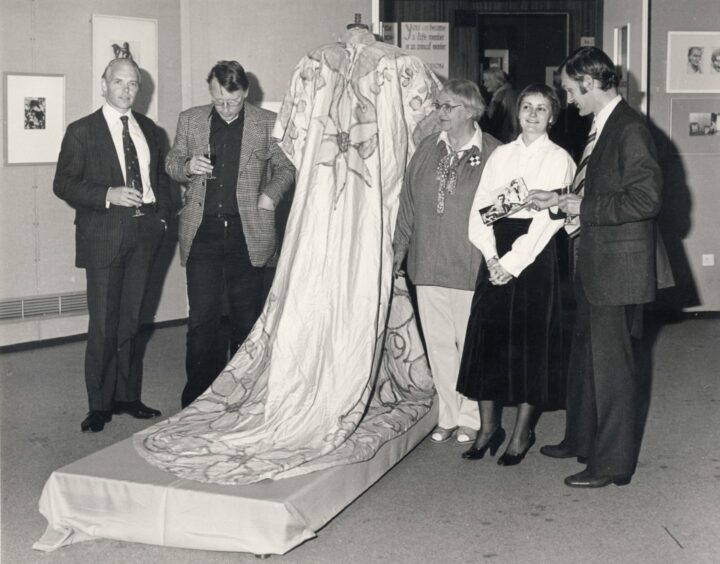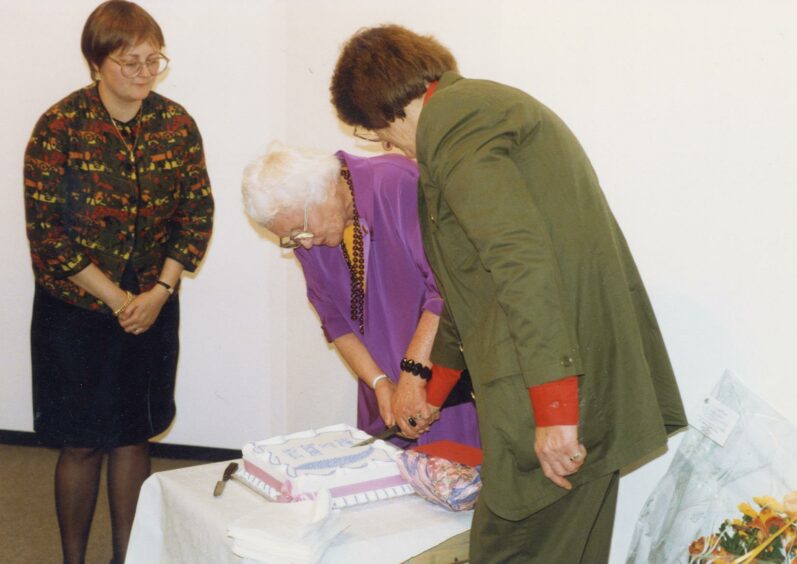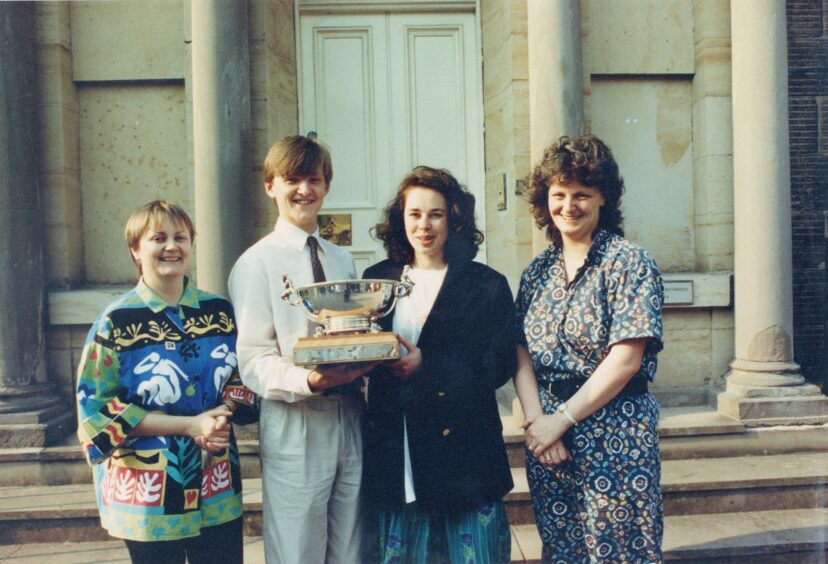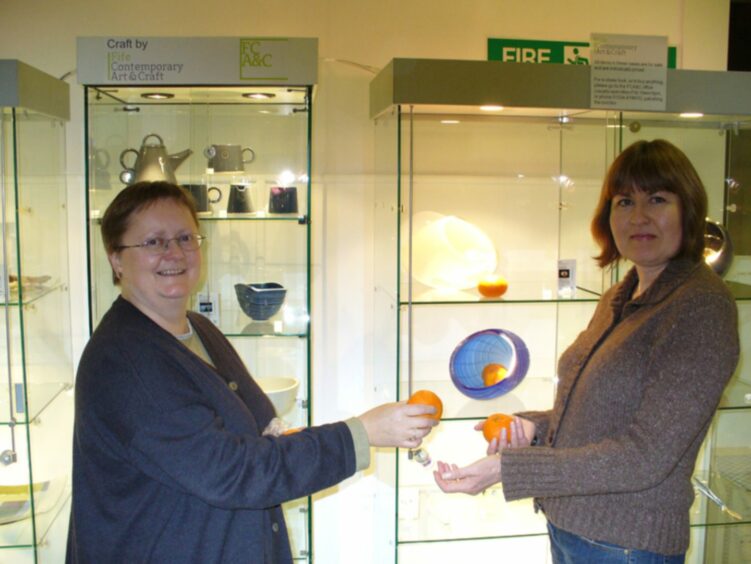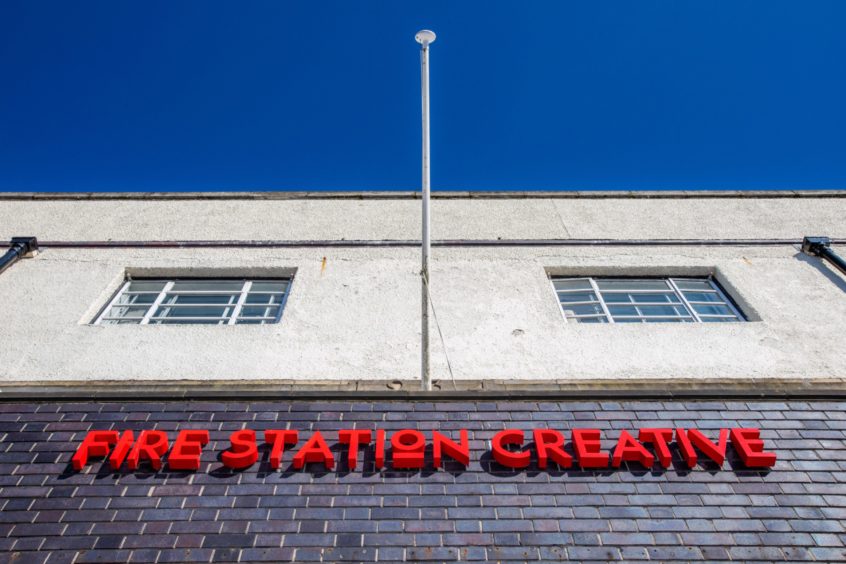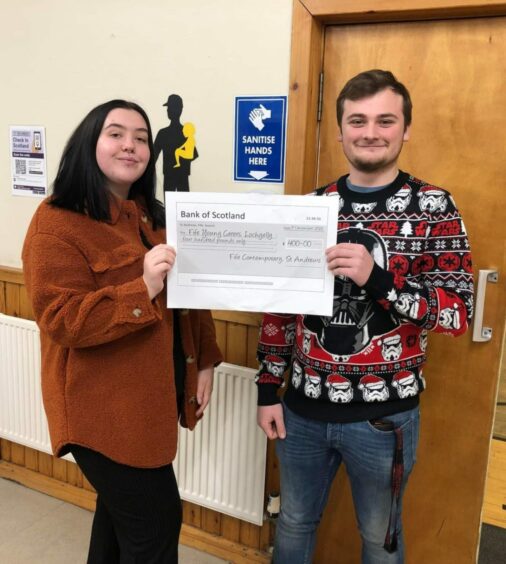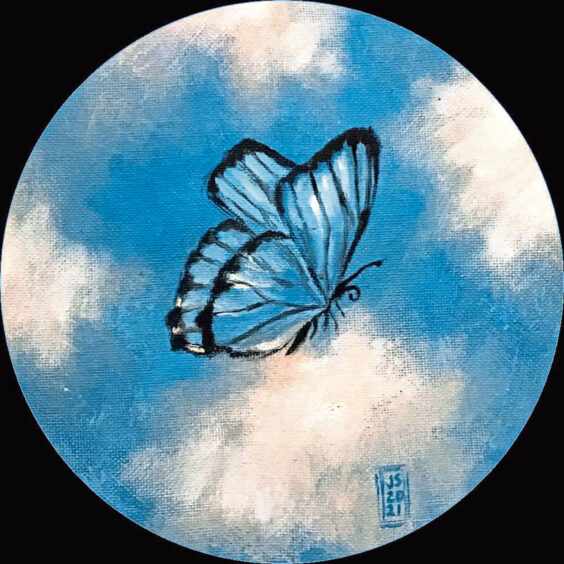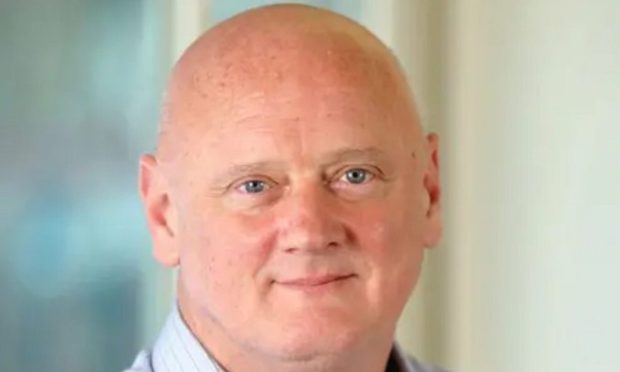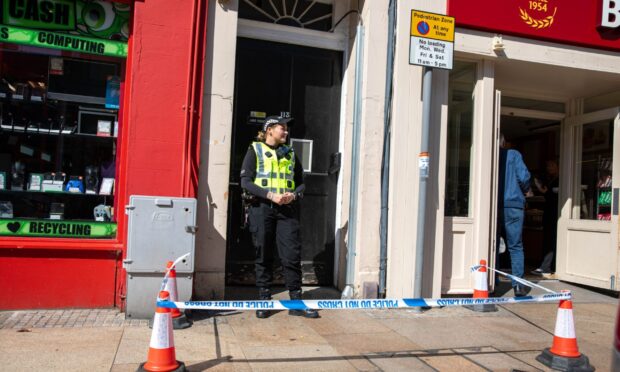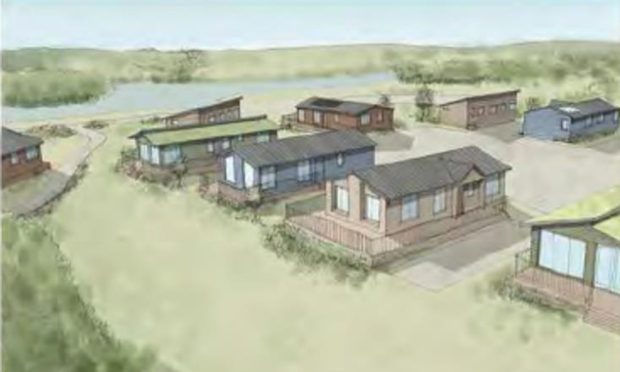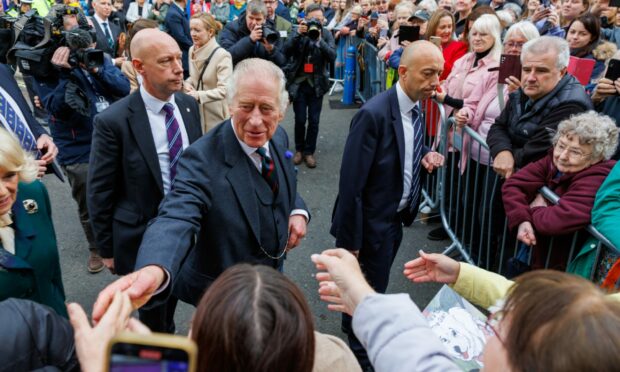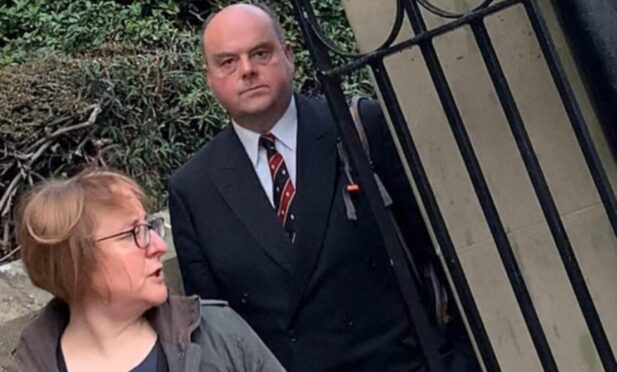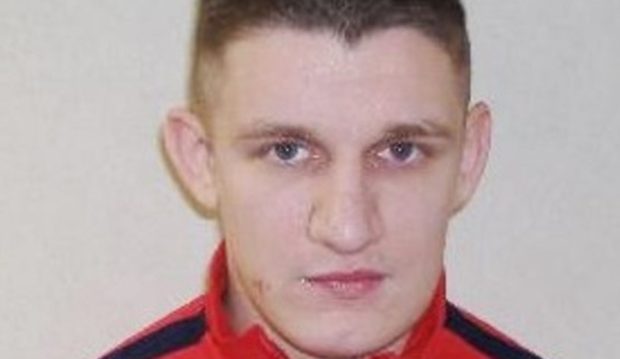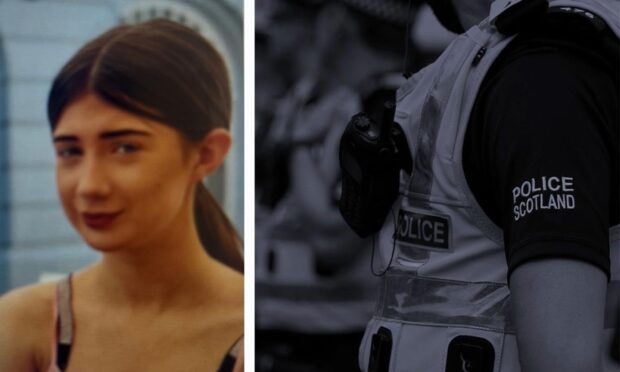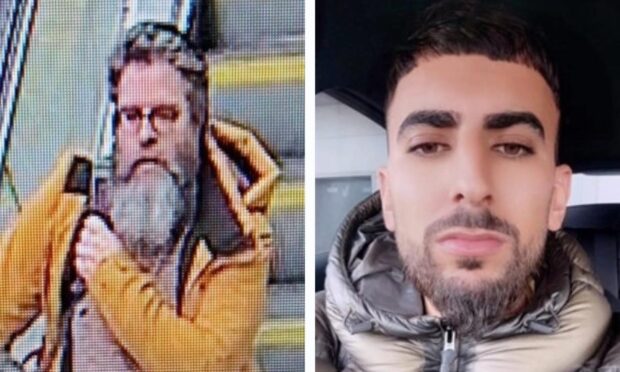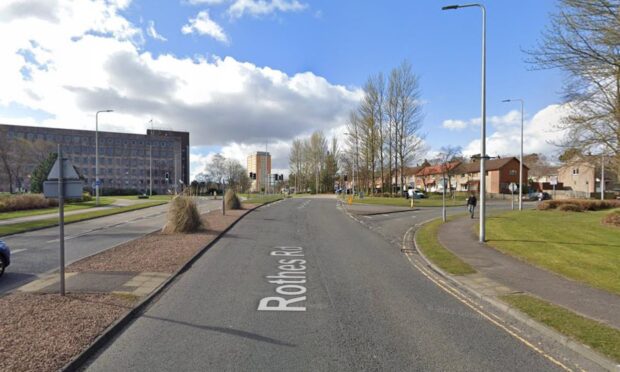Michael Alexander speaks to outgoing Fife Contemporary director Diana Sykes about her 34 years at the helm and to incoming director Kate Grenyer about her ambitions for the future.
If there’s one piece of advice that Fife Contemporary director Diana Sykes has for her successor having retired this week after 34 years at the helm, it’s to seek the support of the small team that run the organisation and to nurture partnerships with everyone from artists to the board.
Diana, who has been leading the independent arts organisation since 1988, stood down on April 5.
Kate Grenyer, former exhibitions curator at Dovecot Studios in Edinburgh, has now taken over the role.
However, when The Courier caught up with the pair to talk about the hand-over of the baton, it also gave Diana an opportunity to reflect on her journey over 34 years and for Kate to think about the challenges ahead.
How it began for Diana
Originally from Stirling, Diana was an art history student at St Andrews University when Fife Contemporary’s predecessor – the Crawford Centre – opened in North Street, St Andrews.
But even as a student, the roots of her fond association with the arts organisation were being nurtured.
“I was a kind of a guinea pig student curator and put together an exhibition of the Scottish Colourist JD Fergusson for the Crawford Centre as an experiment based on research I was doing,” she explains.
“I went off and trained in Manchester and worked with a travelling gallery.
“I then came back to St Andrews to take on the Crawford Centre when it became independent from the university.
“The university used to call it the Crawford Centre for the Arts, so we simplified it!
“It became Fife Contemporary in 2006 when we were no longer based at the arts centre but had an office at St Andrews town hall and then worked across Fife.”
What is Fife Contemporary?
Fife Contemporary produces a high quality programme of visual art and craft to support artists and makers and for the public in Fife, facilitating engagement between them and enriching their lives.
It’s unusual in that it doesn’t have a fixed venue.
However, it’s this flexibility as a small arts organisation, that has allowed it to expand into many more communities across Fife and to offer a more dedicated programme.
“We deliver our programme through a whole variety of different partnerships, “explains Diana.
“We work with museums through OnFife as it is now and the libraries. We work with different artist groups like Off the Rails Arthouse and the Fire Station Creative.
“And we do a programme that is designed specifically to support artists as well as a programme that’s public facing.
“We have exhibitions and residencies where artists work with particular groups.
“We have an artist who just started at the Ecology Centre in Kinghorn for example.
“We work with a whole number of different carers groups across Fife introducing different makers to work with them and bring out their own kind of creative power.
“And we run a summer school for senior school pupils.
“We work with a whole range of different people in the public side and for the artists’ side we organise training events and we have an electronic newsletter that goes out fortnightly.”
Highlights of Diana’s career?
Asked about highlights over the last 34 years, Diana says they have been “very varied” with “lots of challenges” along the way.
When the first Covid-19 lockdown hit in 2020, an exhibition on the road came to a premature end.
However, it also encouraged Fife Contemporary to develop their website which became their “virtual venue”.
This pivot towards digital content has also allowed “deeper interpretation” and given the opportunity to create “legacy” after exhibitions have finished.
“It’s something we’ve been continuing to do,” says Diana.
“While we are organising physical exhibitions we are also very conscious of creating complimentary material online.”
One of the great things about Fife, says Diana, is the strong community of artists across the Kingdom who often band together for open studio events.
While the region is very diverse, people tend not to travel far across it to visit exhibitions in other parts of the region.
That means Fife Contemporary often works with very different audiences.
“Artists in Fife have had to make an effort because there isn’t a city in Fife,” she says, highlighting the additional importance of the natural environment and historic background to the rich tapestry of the Kingdom, which artists feed off.
“There isn’t one magnet in Fife, so they’ve been very self-sufficient.
“I suppose Newport/Tayport, that sort of area – a lot of people connect with Dundee, work in Dundee but live in Fife and contribute to things happening in Fife.
“Similarly on the other coast, you’ve got people who have links to Edinburgh.
“So you’ve got this kind of porousness I guess from Fife into those other places and back again.”
What attracted Kate to the role?
It’s the rich tapestry of Fife and sense of diverse community that attracted Kate Grenyer to the director’s role.
Growing up in Bristol, she brings a wealth of experience in working with visual art and craft within arts and heritage organisations across the UK as well as freelance projects.
An MFA in Contemporary Art Theory completed in 2012 at Edinburgh College of Art further strengthened her approach to research and curation.
In 2021, she curated the highly successful exhibition Archie Brennan: Tapestry Goes Pop! at Dovecot in partnership with National Museums Scotland.
Her broad range of skills also encompass the practical, such as conservation and installation, as well as devising and delivering educational and engagement activities.
“I’d known about Fife Contemporary from my days studying my masters in Edinburgh,” she says.
“I’d always thought I’d come to Edinburgh, do the course, and move back to England.
“But Scotland sucked me in!” she laughs, adding that she’d already moved to Burntisland before the Fife Contemporary job was advertised.
Impressed by quality
Kate said she’s always been impressed with the quality of exhibitions Fife Contemporary brought to Fife while at the same time supporting a local network of artists and connections across Scotland.
The organisation’s “amazing work” with community groups didn’t really hit home, however, until she looked into applying for the job.
With Fife sandwiched between Edinburgh and Dundee and without one central urban settlement, she said this added to the importance of Fife having its own representation and spread.
“Where I used to work, Southampton was an hour and bit from London on the train and had an amazing art school,” she says.
“People used to go to London because they thought the streets were paved of gold.
“I think Fife feels in a very similar situation.
“It’s easy to get sucked to Glasgow or Edinburgh. To think that’s the only place you can be to work or see great exhibitions or be involved in a network of artists.
“It’s nonsense. Fife is a great place to be and work and I really like living here and really appreciate the diversity.
“The internet also makes it much easier to connect people while living and working where they are.
“You’ve got St Andrews then you’ve got so many communities across Fife with very different backgrounds and reasons for being there – you’ve got the mining towns.
“I’m in Burntisland. I love its high street and independent shops. Community is really important to me.”
Kate’s hopes for the future?
Looking to the future, Kate says there will be “much building on what Diana has managed to achieve in 34 years”.
Conscious that arts are often seen as a “soft target” when it comes to funding cuts, they’ll have to continue fighting their corner and championing the advantages of their small and flexible organisation.
She wants everyone to “have the right” to culture and for culture to be part of wider communities – not just a privilege for those who can travel.
She’d like to grow an environmental project investigating how makers can be more carbon efficient and better for the environment.
She appreciates this is a very challenging thing to do.
In a climate challenged world, however, she believes artists and makers artists have an important role to play so that the debate “doesn’t become all doom and gloom negative”.
While online activities have been great during Covid-19, she also wants to further develop the exhibitions and residences programme to allow the public to again interact with real physical experiences of art and craft and making.
“I want to pivot back to a hybrid model and ensure we get those connections and get back to the real world as well,” she says.
“Not just bringing those exhibitions to Fife but bringing Fife out into the world and to be seen as the centre that it is for incredible creativity.
“I know there’s going to be a lot of passion from the makers and artists in Fife who I’m sure will have very strong ideas about what I should be doing.
“I want to be part of that conversation as much as listening to the team and hearing their experiences. I can’t wait to get started!”
